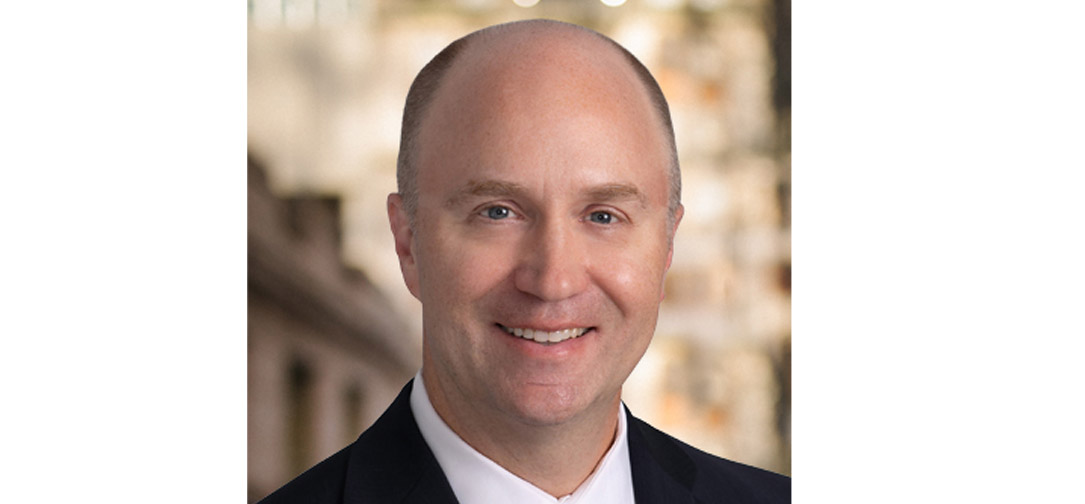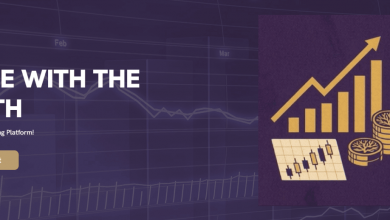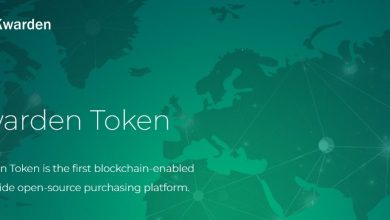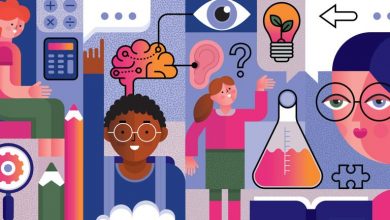Justice Meets Precision: How Attorney Chris Meisenkothen Uses Science and Technology to Win Complex Mesothelioma Cases
Attorney Chris Meisenkothen has carved a distinct path in his legal strategy and scientific rigor in mesothelioma litigation. Blending deep historical insight with cutting-edge technology, Meisenkothen brings a rare precision to cases involving asbestos exposure, transforming complex data into compelling courtroom narratives. As a partner at ELSM Law, his commitment to truth, innovation, and client advocacy shapes every facet of his practice. In this TechBullion interview, he shares how his interdisciplinary approach is redefining what it means to pursue justice in the most challenging toxic-tort. From $20 million verdicts to proprietary tech tools, he leverages innovation to illuminate truth in the courtroom, ensuring that justice is not only served, but presented with clarity and precision.
1) Please tell us more about yourself?
I am Chris Meisenkothen, a trial lawyer with Early, Lucarelli, Sweeney & Meisenkothen in New Haven, CT. My firm, ELSM Law, represents clients all over the country who have been diagnosed with malignant mesothelioma, an aggressive, terminal asbestos-related cancer. I am a Connecticut native and a proud “double Husky” (with two degrees from UConn), and I focus my practice on our dockets in New England and New York.

2) Can you walk us through the legal and scientific preparation behind your $20 million asbestos verdict, and how technology played a role in its success?
Mesothelioma cases are complex, multi-faceted, and require significant knowledge and experience. There are many moving parts, from finding the right expert witnesses, cross-examining the defense experts, understanding the medicine and science behind the claims and defenses, and structuring your presentation effectively for lay jurors and judges to understand. Most cases begin by conducting (what you hope is) an effective deposition of the plaintiff. Once the client’s history and exposures are thoroughly explored in the deposition, significant discovery occurs with the defendants to collect their historical records, take the depositions of their corporate witnesses, work with the expert witnesses, and prepare for trial. It is essential to understand what asbestos is, how it affects the human body, how it causes disease, why it is present in the defendants’ products, how it gets released into the air for a person to breathe, and what effects those exposures have. This complex dance involves industrial hygiene, epidemiology, occupational medicine, pulmonary pathology, mineralogy, and a little bit of history.
Technology helps a little along the way – e.g., simple slide presentations used during depositions, remote video conferencing for depositions or meetings – but technology is invaluable once you get to trial. We routinely use a trial technology firm to help with the editing of video depositions, to set up the audio and visual hardware in the courtroom, to consult on slide decks, and to manage the smooth presentation of our evidence at trial. There are videos to play, exhibits to project, slides to show, documents to enlarge, and even sometimes animations or graphics to create. Technology ultimately helps us to tell our clients’ stories and to communicate and display important information to jurors and judges in a way that modern society has come to expect.
3) How does your academic background in history, sociology, and the history of science influence your approach to complex toxic-tort cases?
I have always been a science enthusiast, impressed by the power of science and the scientific method to find answers to challenging questions; ultimately, I hope, approaching something akin to “the Truth.” My academic background has influenced me to look for themes or trends in the cases, whether historical themes about a defendant’s liability or scientific trends in essential data. Because many of the events in our cases happened long ago, we often have to apply a historical or sociological filter to the information to understand how a specific action fits into the proper historical context. Laws change, regulations change, and scientific knowledge evolves and grows. It is just as important to understand the larger historical trends and how we got where we are as it is to know all the specific facts of a particular case.
4) What systems and technological tools has your firm implemented to manage the high volume and complexity of mesothelioma litigation?
We utilize various technological tools, from the mundane to the cutting edge, to help us keep things manageable. Legal and historical research has become much easier with the modern Internet and sites like Google, WayBack Machine, Newspapers.com, Lexis, or Westlaw. Government records are expanding online daily with searchable archives of historical documents and corporate filings. Universities and private collections have moved online with searchable archives and downloadable content. Artificial intelligence has dramatically simplified and expedited the review of voluminous documents. All of our papers are scanned and OCR’ed for quick retrieval and sharing. Cloud storage has made document filing systems infinite, and Cloud-based document transfer apps have made the transfer of even thousands of pages of documents effortless and effectively cost-free.
One technology tool that has been particularly effective for the firm is using a comprehensive proprietary jobsite database developed in-house and maintained continuously. This “jobsite matcher database” allows us to enter a jobsite and identify all eligible asbestos bankruptcy trusts with which we can file claims for our clients. This helps us to maximize settlement values from asbestos trust fund claims filings and maximize overall recovery values for our clients. Technology has become an invaluable partner in helping us to manage cases and maximize settlement values.
5) How do you stay at the cutting edge of asbestos-related science, and how do you translate that evolving research into persuasive courtroom strategy?
I have always considered it vital to keep up with the medical and scientific literature on asbestos and mesothelioma. If you are not reading the primary literature and relying only on what others have said about the primary literature, then you are missing important details. Consuming, discussing, and thinking about the primary literature is crucial to keep up with new developments. Asbestos is an old problem, but there is still a lot of literature generated by experts in the field who are studying novel exposure pathways, unusual disease presentations, or work-practice exposure simulations that attempt to recreate exposure conditions from years ago.
It is sometimes hard to translate medical and scientific data into exciting material for a jury. Still, you have good experts who can succinctly explain complicated subjects and thoroughly understand the material yourself. In that case, you can devise a way to make technical information understandable and approachable by lay jurors. During jury selection, we want to pick competent jurors not intimidated by complicated issues.
6) How have you adopted remote-work tools, like tele-depositions, virtual case meetings, or digital medical record systems, to streamline case preparation for clients who cannot travel?
We regularly use remote-work tools in our practice. Our clients are probably in the highest possible risk category – elderly, immuno-compromised cancer patients – and they often do not want to travel, or cannot travel, and rarely want to be in large groups of lawyers at in-person depositions like they used to be. Since the pandemic, most people have become experts at videoconferencing (or have a family member who can help them), so clients and lawyers alike are more or less comfortable using the video platforms now. The ability to share screens, show exhibits, and record meetings has also contributed to the smooth adoption of these technologies. The “new normal” has also had the beneficial side-effect of saving many clients thousands of dollars in case expenses – travel, airfare, rental cars, hotels, meals – that accompanied the old methods of travel for depositions away from the office.
7) In what ways has cross-border collaboration and digital communication enhanced your work on behalf of international asbestos victims?
Digital communication is life-changing. It makes everything exponentially easier. The modern world is wired (or wireless, as the case may be), and the ease and speed of digital communication make distance melt away. Whether something as rudimentary as sending emails or as sophisticated as sharing screens and documents over videoconferencing, digital communication has been an essential partner in our practice. The only real barrier to international communication now is the time zone, as we sometimes struggle to find suitable times to meet.
8) What key traits do you believe differentiate a top-tier attorney in asbestos litigation, particularly in how they use technology, teamwork, and innovation?
It is essential to keep learning and to be open to innovation. You have to keep learning about your field, consuming the literature, keeping abreast of new developments in the law, and keeping up to date with the latest technology. It is hard to remember how work used to be without the modern technologies we have quickly taken for granted – smartphones, digital document storage, digital document transfer, high-quality videoconferencing, Cloud-based applications, and electronic filing with the courts. The old systems were a waste of paper and space, and a drain on time and resources. A single mesothelioma case might have dozens of defendants with dozens of defense lawyers. Staff would spend hours doing menial tasks that can now be done with a mouse click or a screen tap. Lawyers must adapt and learn to use the new technologies to benefit their clients and make their practices more efficient. Asbestos cases are too complex, too significant, and too cumbersome to handle any other way.
9) How does your team use spreadsheets, document-management systems, or AI tools to efficiently match clients with the appropriate asbestos trust funds?
Without divulging any confidential proprietary information, suffice it to say that we use a variety of technological tools to help us identify clients’ exposures and match them with potential sources of recovery. Any good asbestos lawyer will leave no stone unturned when investigating a client’s history and will try to obtain the best possible recovery for their clients from whatever the source may be.
10) How do you manage compressed legal timelines while maintaining accuracy and client support, especially using technology and workflow automation?
While our mesothelioma cases have compressed legal timelines compared to other cases like auto accidents or slip-and-falls, we have some peculiar adaptations on our asbestos dockets that help manage the workflow. In most states, a single judge oversees the asbestos docket and works to streamline the process. Pre-trial or case management orders often provide consistency and uniformity to pleadings, discovery, and scheduling. All those processes help save time and manage what would otherwise be chaotic and unwieldy litigation. Additionally, courts have almost entirely adopted e-filing, which saves time and money and effectively eliminates questions about whether documents have been properly or timely filed. Cloud-based document storage and transfer play significant roles in managing and distributing voluminous records to multiple lawyers. Managing internal deadlines has been dramatically simplified with cloud-based document sharing, shared calendars, reminders, “to-do” lists, and other time management tools. Even compressed timelines can be effectively managed with experience, with the help of skilled staff, and with the assistance of reliable technology.




